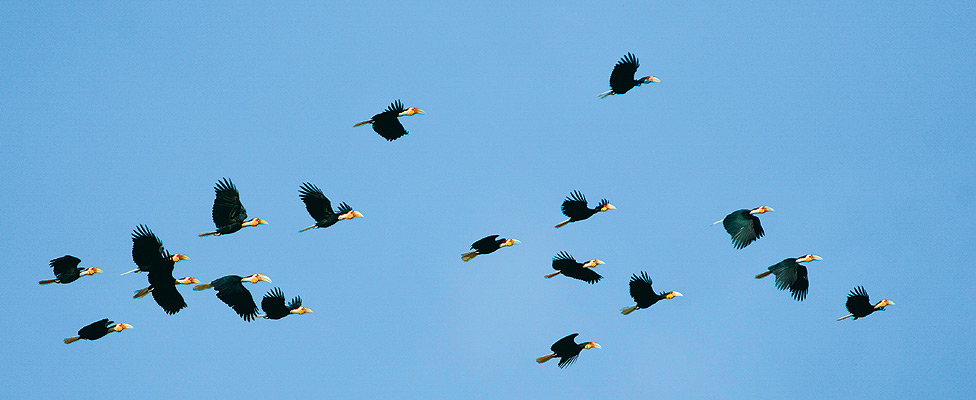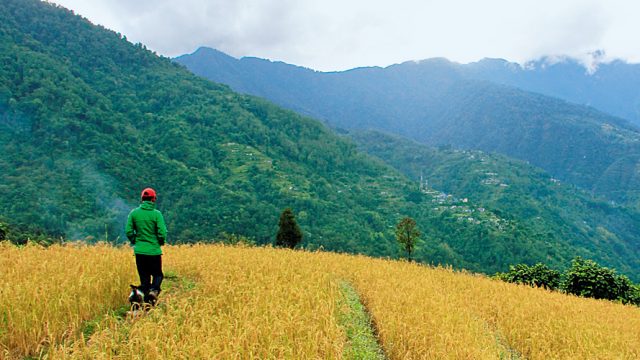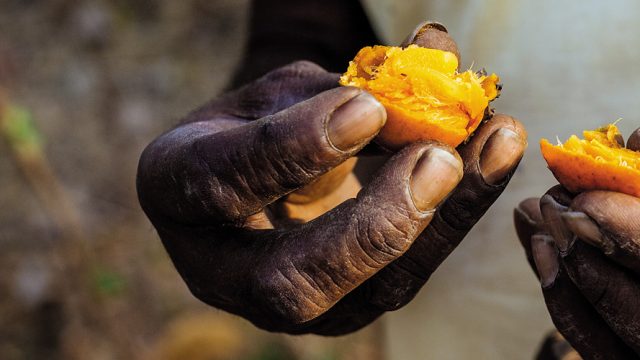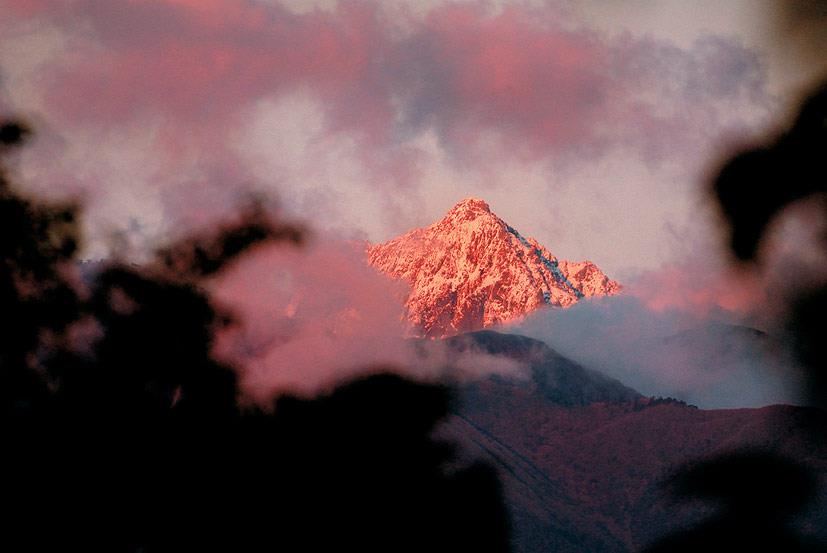
Towering over the Namdapha landscape, the ethereal Dapha Bum gleams in the afternoon light. Namdapha spans an altitude range from around 200m to over 4,500m. The lower reaches are covered in extensive tropical wet evergreen forests. Higher, one traverses sub-tropical and temperate broad-leaved forests, and pine forests, into alpine meadows, and permanent snow and ice. One goes from the land of the clouded leopard to the abode of the red panda - and perhaps, the snow leopard.
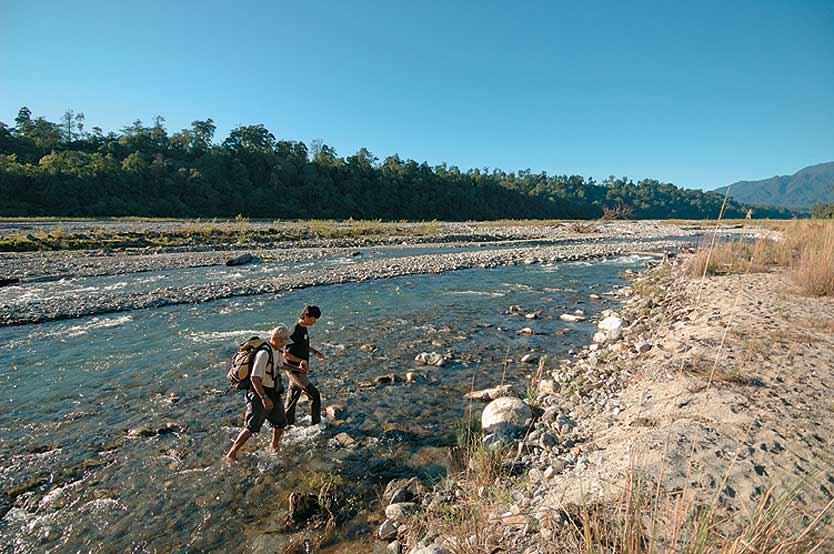
We stay at Deban Forest Rest House the first night. After a relaxed morning exploring and watching gibbons, squirrels and birds, we cross the river by boat to camp on the wind-swept banks of Deban nala. In other places, the rivers had swelled with water and we would form a human chain to cross at specific locations known to experienced Lisu guides. Fed by rain gathered in the vast watershed, and by snow-melt, the streams and tributaries course into the sparkling waters of the Noa-Dihing.
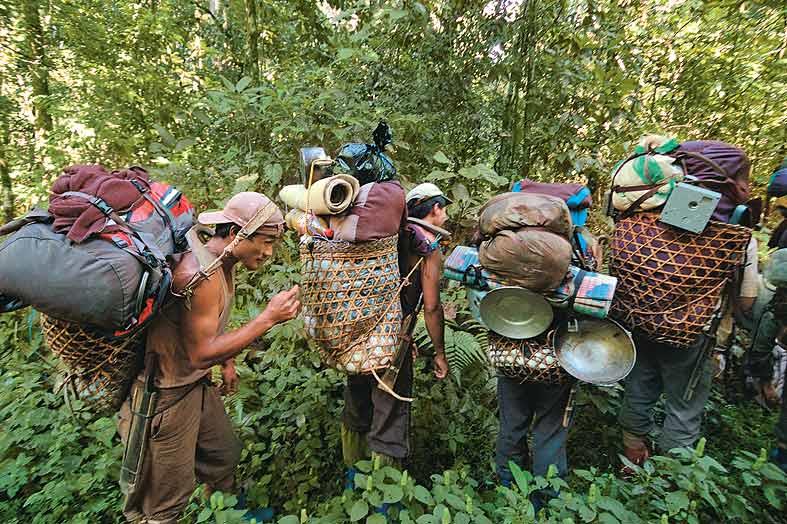
As we shoulder our backpacks, our assistants and porters strap sturdy cane baskets across their heads. Even with their heavier loads, they walk easy and fast, as if they were built for the terrain. We squelch through the slush of landslides, sinking knee-deep at times, soldiering on along the forest tracks and river crossings, even as our Lisu assistants walk and climb expertly, cross landslides and rivers; all with a smile on their lips. With cane, bamboo and a handy dao (machete) the Lisu can work all manner of wonders from utensils and baskets to pipes and shelters in no time.
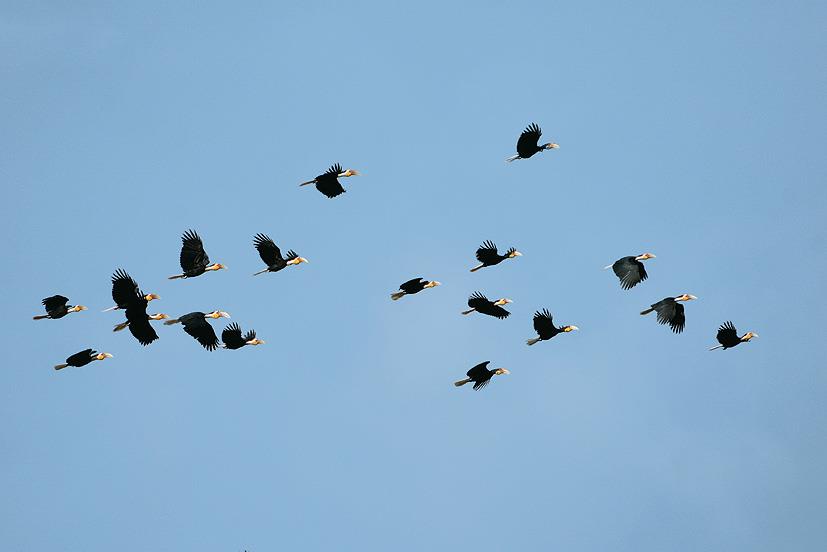
Namdapha comes alive when hornbills are in flight. Five species of hornbills are found here, including the rare Rufous-necked hornbill, the majestic Great and Wreathed hornbills and the smaller Oriental pied and Brown hornbills. In their itinerant wanderings across vast areas of forest in search of fruiting trees, large flocks of Wreathed hornbills crisscross the skies every day, the whooshing of their wing beats audible from afar. Hornbills in Arunachal's forests have established their importance as seed dispersers and architects of the rainforest plant communities.
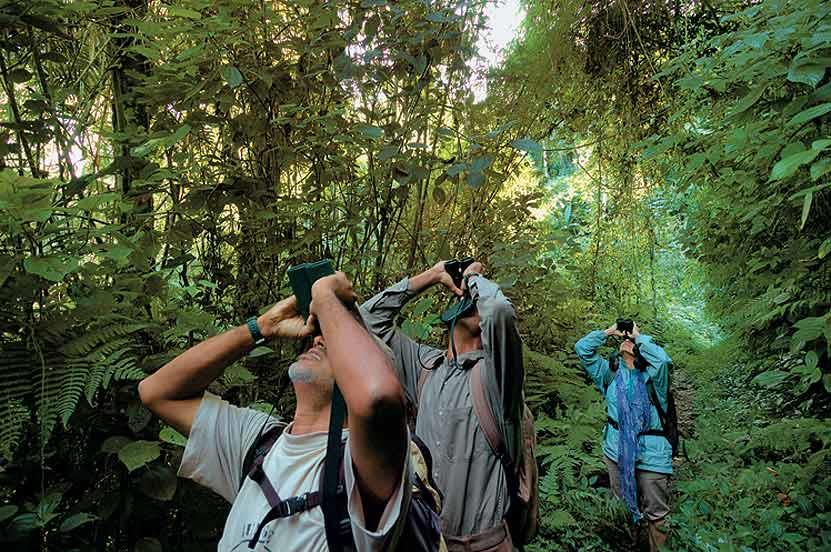
The rainforests beyond Deban must rank among the most biologically rich forests in northeast India. Around Hornbill, our next campsite, the forests yield their riches. We watch Hoolock gibbons, Capped langurs and Malayan giant squirrels. Also, a thrilling array of birds, many to be found only in northeast India within the country. Even the names are enticing: mesias and tesias, malkohas and hornbills, peacock-pheasants and wren-babblers, cochoas and laughing thrushes, parrotbills and yuhinas.
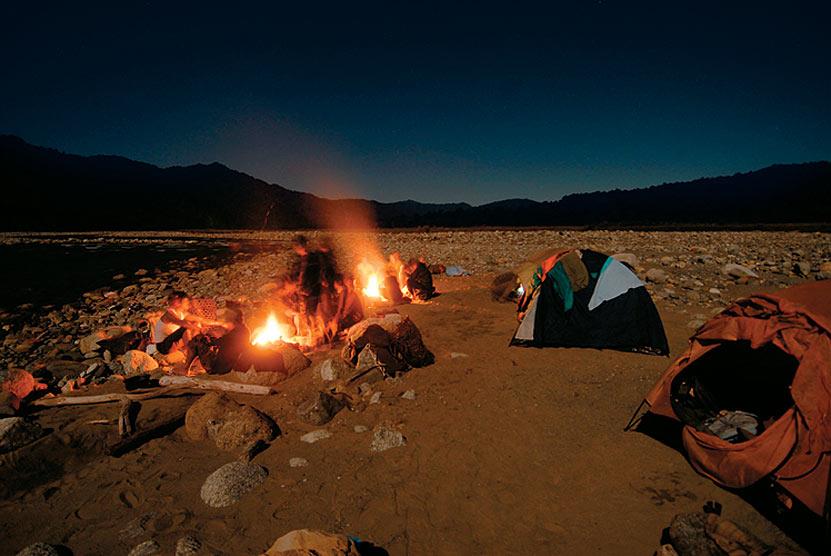
As we walk, our assistants go ahead to pitch camp. After the trek, punctuated by exciting wildlife sightings, we welcome the sight of the pitched camp and hot cups of tea. The vista of the Namdapha river valley bounded by forest-clad hills and snowcapped peaks, seems like one of the last truly wild places in India. By the murmuring river, under silvery starlight, we huddle by the warm glow of the fire and tuck into a simple but tasty dinner of rice, dal and boiled lai patta.
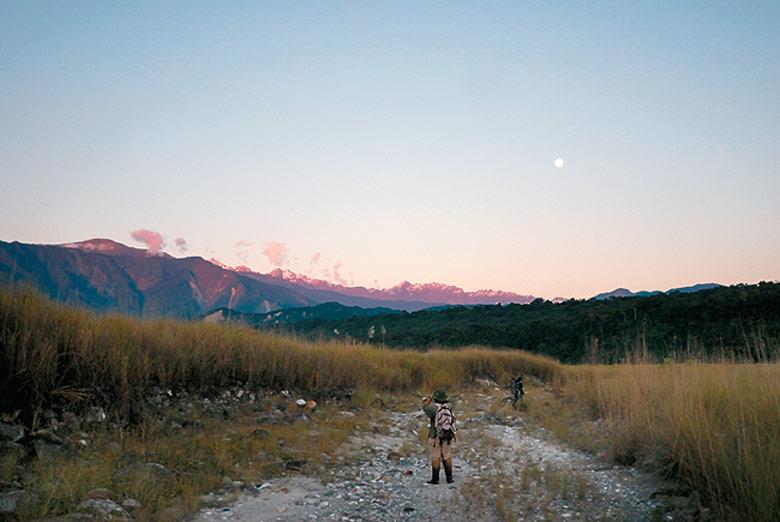
The wide river valleys strewn with rounded boulders are punctuated by stretches of tall grass, the home of the hog deer and birds of the open grassland such as chats and shrikes. We learn it is as easy to lose one's way in the tall grass as it is in dense forest, and are glad to have our trusty Lisu guides on hand to show the way. The Noa-Dihing river is alive with birds: black storks and cormorants, sprightly black-and-white forktails and wagtails, dippers and ibisbills, redstarts and river lapwings.
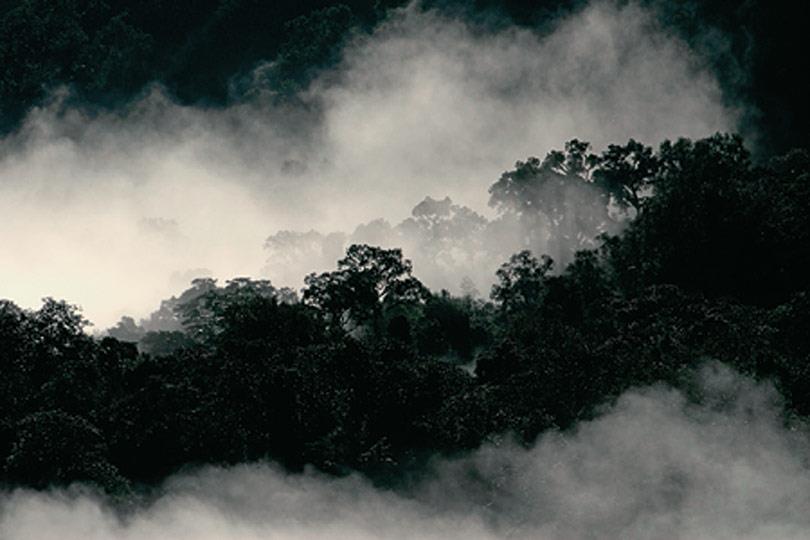
Wading waist-deep across the Noa-Dihing, we trek to our next camp at Ngwazakha, or 38th-mile settlement, a reference to a notional milestone on a nearly non-existent road. The next morning, with misty vapours rising from unexplored forests in the distance, we trudge on to camp near 52 Mile. Another day of walking brings us to our putative campsite near 62 Mile, only to find it all wet and sloping. We have to move camp a mile or so further; in our tiredness, this seems the longest mile yet.
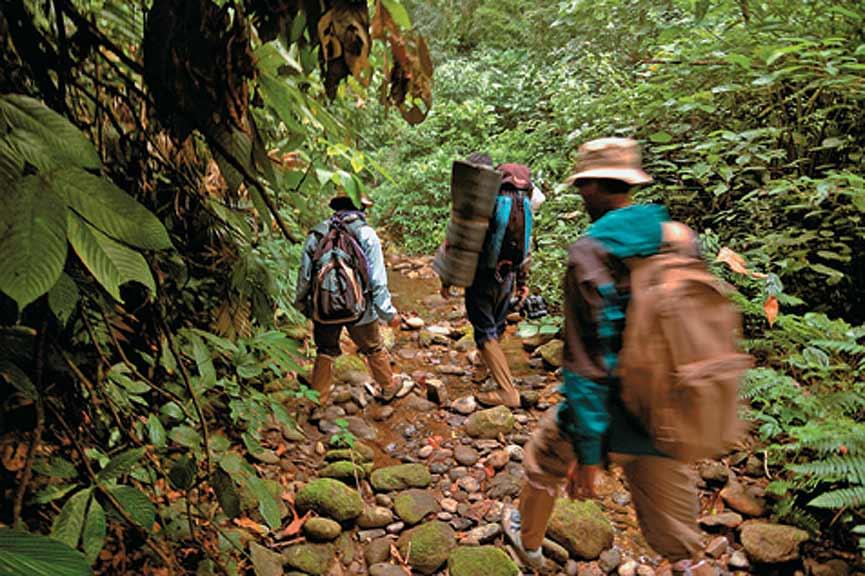
Our walk took us through dense rainforests and bamboo thickets, rivers and streams, over boulders and landslides, partly along the notional Miao-Vijaynagar Road, but in fact frequently off-road. The M-V road, built in 1972 and defunct since the 1990s, serves more as a frame of reference in the landscape than as a genuine path. We did parts of the last stretch towards 77 Mile and on to Gandhigram village on the M-V road, catching glimpses of enthralling forests and wildlife, but with little time to stop, admire and absorb.

Finally, eight days and nearly 140km after we left Miao, we behold the village of Gandhigram (or Shidi to the Lisu). With rice-fields and bamboo houses, pigs and chicken, and children playing, the village seemed little conscious of its isolation at India's eastern extremity. After two days of rest and feasting on delicious pork, pineapples, native popcorn and rice cakes, we move on to Vijaynagar. The final 18km trek takes us past forests and jhum fields, crossing cane bridges and streams
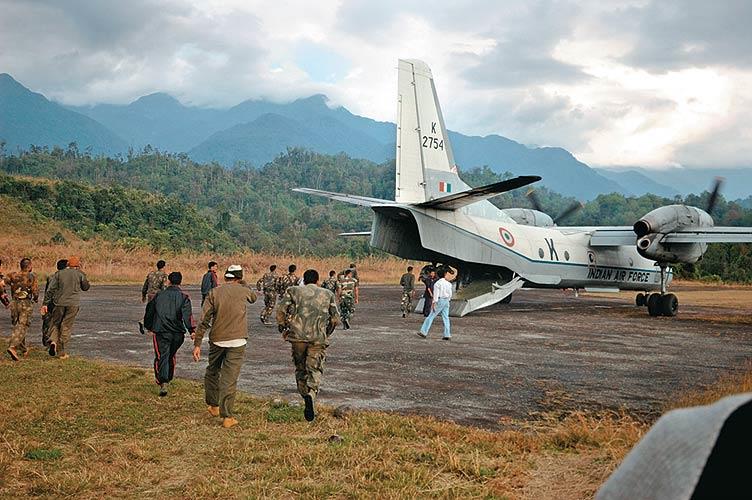
Vijaynagar, at Namdapha's doorstep and yet quite detached from it in spirit, marks its events by the arrival and departure of the irregular AN-32 flights. With the weather threatening to worsen, we decide to wait for a sortie to head back. It is a tense wait, since there is little assurance of a flight, but luckily we get a flight on the second day. Strapped aboard along with luggage we are off, and below us, the landscape that took us 12 days to trek through flashes past in 20 minutes. Yet, the range after range of hills and unbroken forest entice us; even as we leave, we feel we shall come back.

Medo's pit viper, found only in Namdapha within India
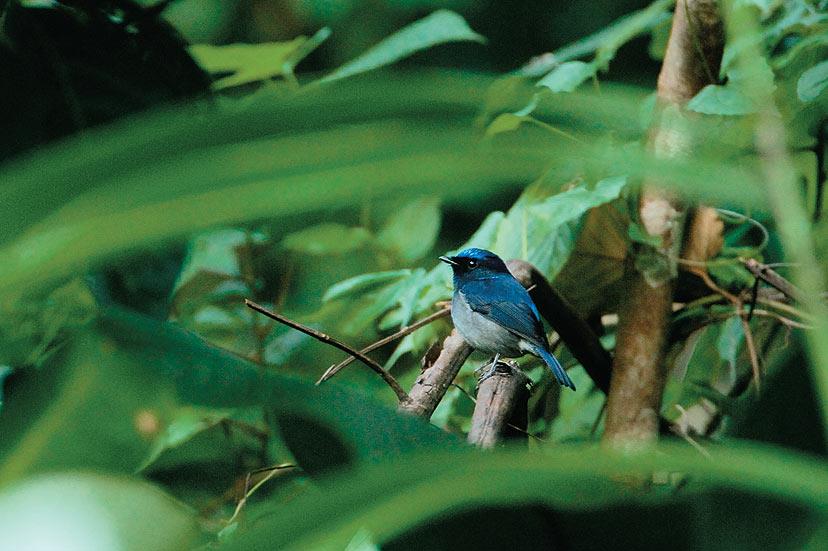
Small niltava
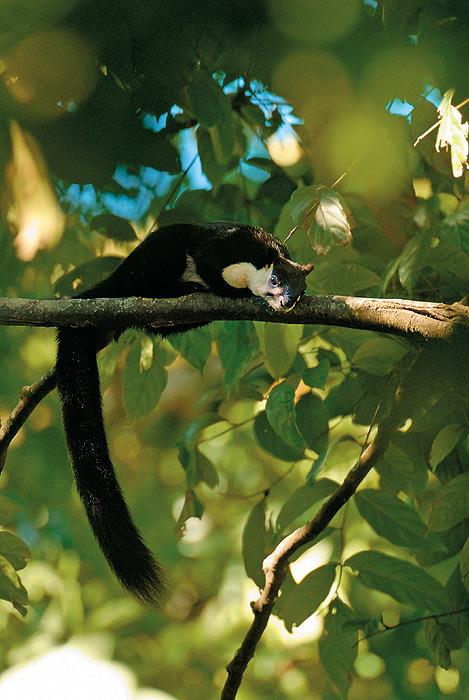
Malayan giant squirrel
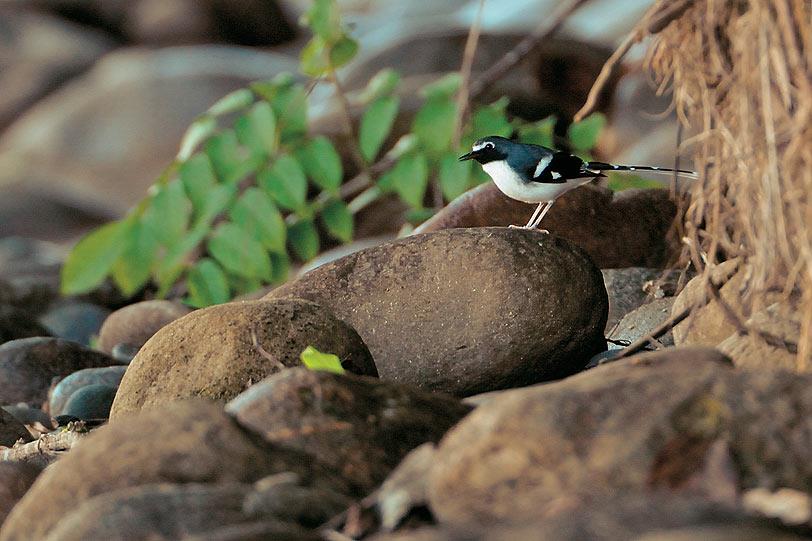
Slaty-backed forktail
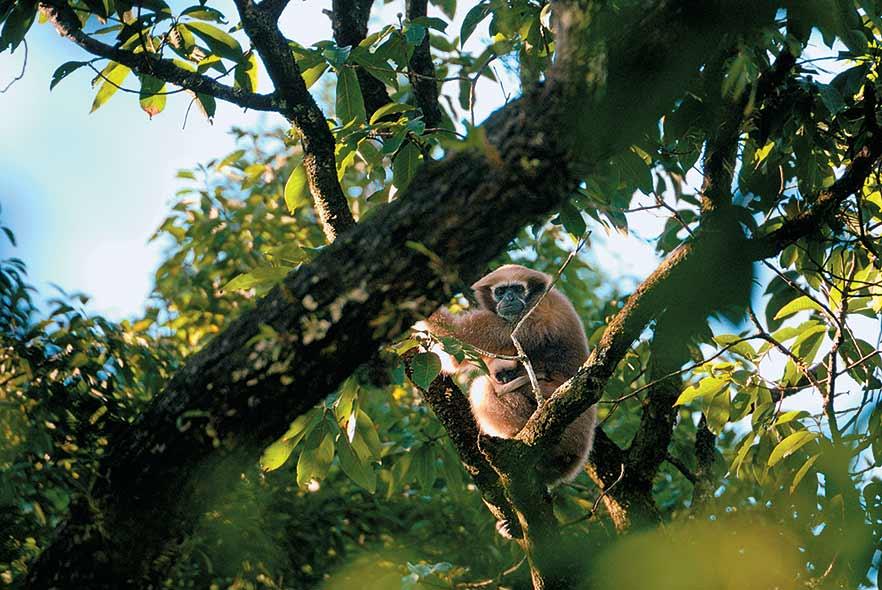
The Hoolock gibbon, India's only ape
biodiversity
Eastern Himalaya
forest


